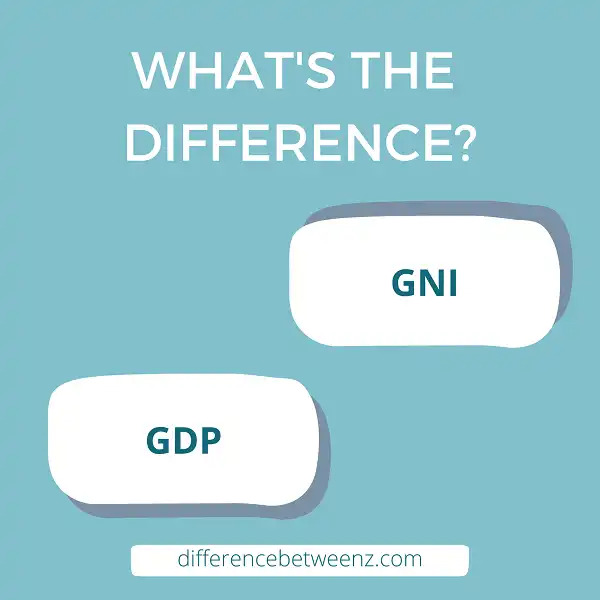What is the difference between GNI and GDP? This is a question that many people have asked, but it can be a difficult question to answer. In this blog post, we will explore the differences between these two measures of economic activity. We will also discuss how they are both calculated and how they are used to measure economic growth. By the end of this blog post, you should have a better understanding of the differences between GNI and GDP and how each one is used to measure economic activity.
What is GNI?
GNI, or Gross National Income, is a measure of a country’s total economic output. This includes all forms of income generated by the country’s residents and businesses, including wages, profits, interest, and rent. GNI is often used as a proxy for a country’s standard of living. GNI per capita, or GNI divided by the population size, is sometimes used as a measure of average income. GNI can also be used to compare economic output between countries. For example, the United States has a GNI of more than $17 trillion, while the GNI of the United Kingdom is about $2.6 trillion. GNI is not a perfect measure of economic activity, but it is a helpful tool for understanding a country’s overall economic health.
What is GDP?
GDP, or gross domestic product, is a measure of a country’s economic output. It includes all of the goods and services produced within a country’s borders over a certain period of time, typically one year. GDP is often used as a gauge of a country’s overall economic health. A higher GDP indicates a healthier economy, while a lower GDP can be indicative of problems such as recession or depression. GDP can also be used to compare the economies of different countries. For example, the United States has the largest GDP in the world, while smaller countries like Luxembourg have much smaller GDPs.
Difference between GNI and GDP
GNI (Gross National Income) and GDP (Gross Domestic Product) are two measures of a country’s economic output. GNI includes all of the income earned by a country’s residents, regardless of where they are located. This includes income from both work and investments. GDP, on the other hand, only includes the value of goods and services produced within a country’s borders. GNI is therefore a wider measure of a country’s economic activity than GDP. GNI is often used to assess a country’s standard of living, as it provides a more accurate picture of how much income residents have available to them. GDP is more commonly used to assess a country’s economic growth.
Conclusion
GNI and GDP are both important measures of a country’s economic health, but they measure different things. GNI is a more accurate representation of the country’s economy because it includes income from abroad, while GDP does not. Understanding the difference between GNI and GDP can help you make better decisions about where to invest your money.


